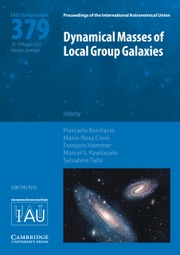Article contents
Search and investigation of extra-solar planets with polarimetry
Published online by Cambridge University Press: 02 May 2006
Abstract
Light reflected from planets is polarized. This basic property of planets provides the possibility for detecting and characterizing extra-solar planets using polarimetry. The expected polarization properties of extra-solar planets are discussed that can be inferred from polarimetry of “our” solar system planets. They show a large variety of characteristics depending on the atmospheric and/or surface properties. Best candidates for a polarimetric detection are extra-solar planets with an optically thick Rayleigh scattering layer.
Even the detection of highly polarized extra-solar planets requires a very sophisticated instrument. We present the results from a phase A (feasibility) study for a polarimetric arm in the ESO VLT planet finder instrument. It is shown that giant planets around nearby stars can be searched and investigated with an imaging polarimeter, combined with a powerful AO system and a coronagraph at an 8 m class telescope.
A similar type of polarimeter is also considered for the direct detection of terrestrial planets using an AO system on one of the future Extremely Large Telescopes.
- Type
- Contributed Papers
- Information
- Proceedings of the International Astronomical Union , Volume 1 , Colloquium C200: Direct Imaging of Exoplanets: Science & Techniques , October 2005 , pp. 165 - 170
- Copyright
- © 2006 International Astronomical Union
- 24
- Cited by


